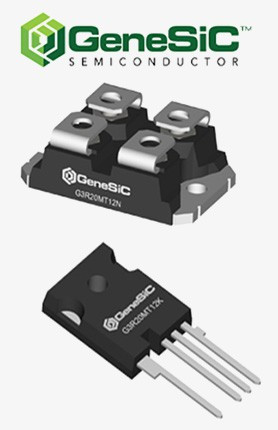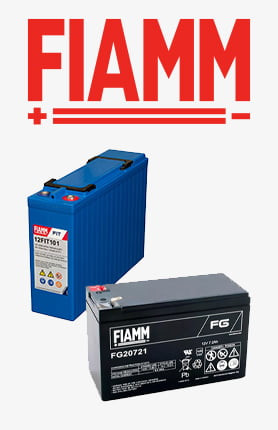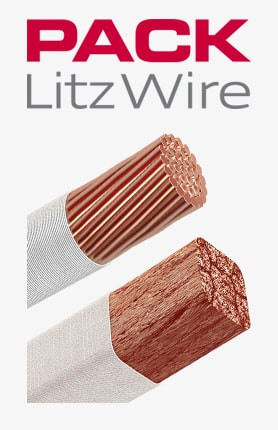trebuie să fii logat
-
întoarce-teX
-
Componente
-
-
Category
-
Semiconductoare
- Diode
- tiristoare
- Module izolate electric
- Redresoare în punte
-
Tranzistoare
- tranzistoare GeneSiC
- Module MOSFET Mitsubishi SiC
- Module MOSFET STARPOWER SiC
- Module MOSFET ABB SiC
- Module IGBT de la MITSUBISHI
- Module de tranzistori MITSUBISHI
- module MITSUBISHI MOSFET
- Module de tranzistori ABB
- Module IGBT de la POWEREX
- Module IGBT - de la INFINEON (EUPEC)
- Elemente semiconductoare din carbură de siliciu
- Accesați subcategoria
- Șoferii
- Blocuri de putere
- Accesați subcategoria
- Traductoare de curent și tensiune LEM
-
Componente pasive (condensatori, rezistențe, siguranțe, filtre)
- Rezistoare
-
Siguranțe
- Siguranțe miniaturale pentru sisteme electronice din seria ABC și AGC
- Siguranțe tubulare cu acțiune rapidă
- Inserții întârziate cu caracteristici GL/GG și AM
- Legături sigure ultra-rapide
- Siguranțe standard britanice și americane cu acțiune rapidă
- Siguranțe cu acțiune rapidă standard european
- Siguranțe de tracțiune
- Siguranțe de înaltă tensiune
- Accesați subcategoria
-
Condensatoare
- Condensatoare pentru motoare
- Condensatoare electrolitice
- Condensatori Icel Film
- Condensatoare de putere
- Condensatoare pentru circuite DC
- Condensatoare de compensare a puterii
- Condensatoare de înaltă tensiune
- Condensatoare pentru încălzire prin inducție
- Condensatoare de impulsuri
- Condensatoare DC LINK
- Condensatoare pentru circuite AC/DC
- Accesați subcategoria
- Filtre anti-interferențe
- Supercondensatoare
- Protecție la supratensiune
- Filtre de emisii revelatoare TEMPEST
- Accesați subcategoria
-
Relee și Contactoare
- Teoria releelor și contactoarelor
- Relee cu stare solidă trifazată CA
- Relee cu stare solidă DC
- Regulatoare, sisteme de control și accesorii
- Porniri ușoare și contactoare inversoare
- Relee electromecanice
- Contactoare
- Comutatoare rotative
-
Relee cu stare solidă CA monofazate
- Relee cu stare solidă CA monofazate Seria 1 | D2425 | D2450
- Relee semifazate CA monofazate, seria CWA și CWD
- Relee semifazate CA monofazate seriile CMRA și CMRD
- Relee cu stare solidă CA monofazate Seria PS
- Relee cu stare solidă AC seria duble și cvadruple D24 D, TD24 Q, H12D48 D
- Relee monofazate din seria GN
- Relee cu stare solidă CA monofazate Seria CKR
- Relee monofazate pentru șină DIN AC SERIA ERDA și ERAA
- Relee AC monofazate pentru curent de 150A
- Relee duble cu stare solidă integrate cu radiator pe șină DIN
- Accesați subcategoria
- Relee cu stare solidă imprimabile monofazate CA
- Relee de interfață
- Accesați subcategoria
- Miezuri și alte componente inductive
- Radiatoare, Varistoare, Protectie termica
- Fani
- Aer conditionat, Accesorii tablou, Racitoare
-
Baterii, încărcătoare, surse de alimentare tampon și convertoare
- Baterii, încărcătoare - descriere teoretică
- Baterii litiu-ion. Baterii personalizate. Sistem de management al bateriei (BMS)
- baterii
- Incarcatoare de baterii si accesorii
- UPS și surse de alimentare tampon
- Convertoare si accesorii pentru fotovoltaice
- Stocarea energiei
- Pile de combustibil cu hidrogen
- Celule litiu-ion
- Accesați subcategoria
-
Automatizare
- Elevatoare Spiralift
- Piese pentru drone Futaba
- Întrerupătoare de limită, Micro întrerupătoare
- Senzori, traductoare
- Pirometre
- Contoare, relee de timp, contoare de panou
- Echipament industrial de protectie
- Semnale luminoase și sonore
- Cameră termică
- Afișaje LED
- Butoane și întrerupătoare
- Accesați subcategoria
-
Cabluri, fire Litz, Conduite, Conexiuni flexibile
- Firele
- Presetupe și manșoane
- Chipurile
-
Cabluri pentru aplicatii speciale
- Cabluri de prelungire și compensare
- Cabluri de termocuplu
- Cabluri de conectare pentru senzori PT
- Cabluri cu mai multe fire de temperatură. -60°C până la +1400°C
- Cabluri de medie tensiune SILICOUL
- Cabluri de aprindere
- Cabluri de incalzire
- Cabluri cu un singur conductor temp. -60°C până la +450°C
- Fire de cale ferată
- Cabluri de încălzire în ex
- Cabluri pentru industria de apărare
- Accesați subcategoria
- tricouri
-
Impletituri
- Impletituri plate
- Impletituri rotunde
- Impletituri foarte flexibile - plate
- Impletituri foarte flexibile - rotunde
- Impletituri cilindrice de cupru
- Impletituri si capace cilindrice din cupru
- Curele flexibile de împământare
- Impletituri cilindrice din otel zincat si inoxidabil
- Impletituri de cupru izolate PVC - temperatura de pana la 85 de grade C
- Impletituri plate din aluminiu
- Kit de conectare - impletituri si tuburi
- Accesați subcategoria
- Echipament de tracțiune
- Capse de cablu
- Sine flexibile izolate
- Sine flexibile multistrat
- Sisteme de management al cablurilor
- Accesați subcategoria
- Vezi toate categoriile
-
Semiconductoare
-
-
- Furnizori
-
Aplicații
- Automatizare HVAC
- Automatizare industrială
- Băncile de energie
- Cercetare si masuratori de laborator
- Componente pentru zonele cu pericol de explozie (EX)
- Echipament industrial de protectie
- Echipamente pentru dulapuri de distributie si control
- Exploatare minieră, metalurgie și turnătorie
- Imprimare
- Încălzire prin inducție
- Inginerie energetică
- Mașini CNC
- Masini de sudura si sudori
- Mașini de uscare și prelucrare a lemnului
- Masini pentru termoformarea materialelor plastice
- Măsurarea și reglarea temperaturii
- Motoare si transformatoare
- Surse de alimentare (UPS) și sisteme redresoare
- Tracțiune cu tramvai și feroviar
- Unități DC și AC (invertoare)
-
Instalare
-
-
Inductori
-
-
Dispozitive de inducție
-
-
Serviciu
-
- Kontakt
- Zobacz wszystkie kategorie
5 Best Methods for Installing POWERSAFE (POWERLOCK) Connectors

5 Best Methods for Mounting POWERLOCK Connectors Step by Step
Looking for reliable and effective methods for mounting power connectors? Phase 3 Connectors has provided a detailed guide that describes step-by-step the three most popular methods: screwing, mounting on threaded sleeve, and clamping. In this article, we will focus on the first two methods, discussing their key steps and recommendations.
Screwing Method for Mounting POWERLOCK Connectors
The screwing method is one of the most commonly used methods for mounting power connectors. Here are the steps to correctly terminate a cable using this method:
Step 1: Preparation
- Unpack the packaging and remove the cable gland and contact.
- Check the cable diameter. The standard black gland M40A is designed for cables with a diameter of 19-28 mm. If the cable has a diameter between 15 and 18 mm, the reducer PP00131 should be applied to the M40A gland.
Step 2: Cable Preparation
- Slide the cable gland along the cable sheath.
- Apply the appropriate end collar or combination of collars to the conductors. Ensure that all conductor cores are inside the end collar.
Step 3: Cable Termination
- Carefully remove the cable insulation by 33 mm. Try not to damage any of the conductor cores.
Step 4: Screwing
- Insert the cable and reducers into the back of the contact, ensuring they are fully inserted inside the contact. Use a 5 mm wrench to tighten the screws according to the table.
Mounting on Threaded Sleeve Method for POWERLOCK Connectors
Another popular method for mounting power connectors is mounting on a threaded sleeve. Here's how to do it step by step:
Step 1: Inserting the Contact
- Insert the contact into the back of the insulator and align the hole in the contact to be in line with the holes in the insulator.
Step 2: Mounting the Threaded Sleeve
- When the panel connector is mounted in the device, remove the nut and washer from the threaded part.
- Place the selected terminal or accessory on the threaded area.
- Reapply the washer and screw onto the threaded area, tightening to a maximum of 12-14 Nm.
With these detailed instructions, mounting power connectors becomes simple and effective. Let's now move on to the next part, where we will discuss step by step the clamp methods and the termination of connector mounting.
Crimping Pins Method
The last method we'll discuss is the crimping method, which requires special tools to perform the assembly correctly. Here's how to proceed:
Step 1: Tool Preparation
- Ensure you have the appropriate crimping tools, including the correct jaw set.
Step 2: Selecting Crimping Set
- Choose the appropriate crimping set based on the cable size. For example, if you're using a cable with a cross-section of 240 mm², use the ME48 set.
Step 3: Cable Preparation
- Remove the cable insulation, leaving 43 mm of exposed wires.
Step 4: Wire Insertion
- Insert the wire into the back of the contact, ensuring all wire strands are inside the contact.
Step 5: Crimping
- Carefully place the contact and wire into the crimping tool and close the tool. When the tool achieves the proper compression, you will feel and hear a click. Then, the tool can be opened to release the crimped contact.
When selecting the appropriate mounting method, always follow the manufacturer's recommendations and strictly adhere to the steps. Let's now proceed with the termination of connector mounting and discuss safety and maintenance procedures.
Clamping Method
The clamping method involves mechanically clamping wires using special clamps, ensuring a solid electrical connection. Here are the steps for mounting a connector using this method:
Step 1: Wire Preparation
- Prepare the wire appropriately by removing insulation to a specified length and bending a small portion of the wire end at a 90-degree angle.
Step 2: Inserting Wire into Connector
- Insert the appropriate wire end into the clamping connector, ensuring all wire strands are properly positioned.
- Use a special crimping tool to securely clamp the connector onto the wire. Ensure that the crimping is sufficiently strong to provide a reliable connection.
Soldering POWERLOCK Connectors Method
The soldering method involves connecting wires by melting solder and joining it with connector elements. Here are the steps for mounting a connector using this method:
Step 1: Wire Preparation
- Remove the wire insulation to a specified length and clean the exposed wire section using a cleaning agent or sandpaper.
- Apply solder to the cleaned wire section and the appropriate connector part.
- Insert the cleaned wire into the connector and solder it using a soldering iron, ensuring a solid connection.
Completing Connector Mounting and Safety Procedures
Termination of power connectors is a key element in ensuring a reliable electrical connection. After completing the mounting of connectors, it's important to perform safety and maintenance procedures to ensure long-term performance and safety of the connection.
Safety Procedures:
- 1. Regular Insulator Checks: Periodically inspect the outer surface of insulators for cracks or damage. If any signs of damage are detected, the insulator should be replaced.
- 2. Check Cable Gasket Tightness: During use, cable gaskets may loosen, leading to water ingress. Regularly checking the tightness of gaskets is therefore essential.
- 3. O-ring Seal Inspection: If you suspect O-ring seal degradation, they should be replaced. Seals should be in good condition and properly positioned inside the connectors.
- 4. Regularly check the condition of the front sealing ring. Additionally, applying a thin layer of silicone grease to the sealing ring surface will allow for easy mating and protect the ring from degradation.
Performing these procedures after mounting power connectors is crucial to ensuring long-term performance and safety of the connection. They can help avoid potential failures and hazards to the electrical system.
If needed, service replacement parts are readily available from the manufacturer. It's also important to remember that any work related to the installation, inspection, and maintenance of power connectors should be carried out only by qualified electricians, following local and national electrical regulations.
Summary
Mounting POWERLOCK connectors requires precision and the right tools, but also strict adherence to the manufacturer's recommendations. With detailed instructions, you can effectively assemble cables, ensuring reliability and safety of the connection.
Related product
Related posts
 Now available – DC/DC converters from PREMIUM
Now available – DC/DC converters from PREMIUM
 New release in DACPOL lighting for lathes – Kira covers
New release in DACPOL lighting for lathes – Kira covers





Leave a comment